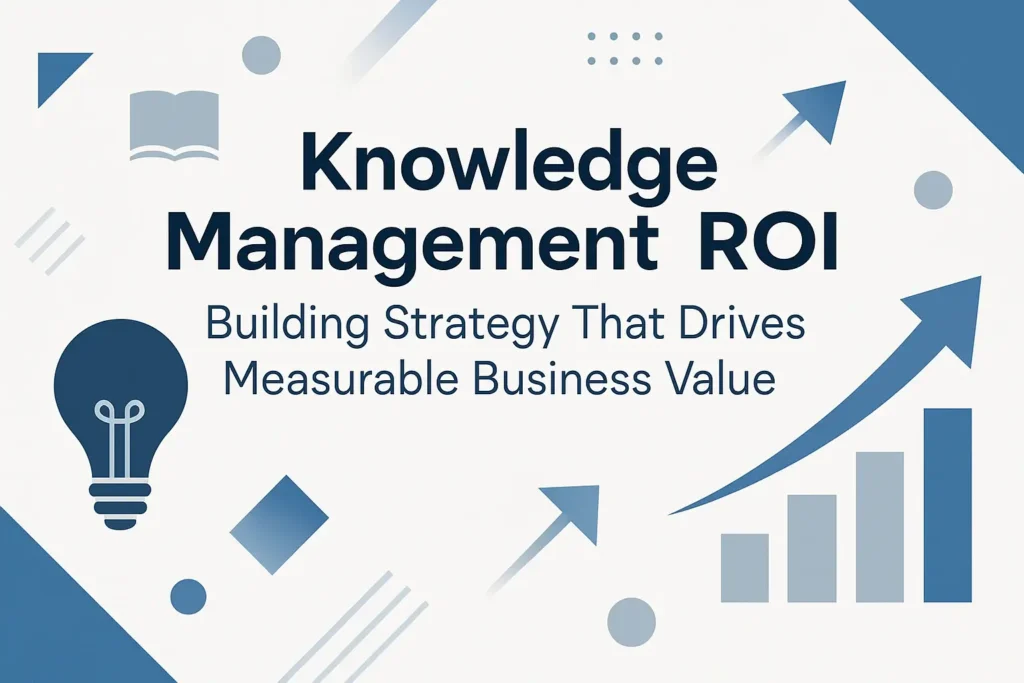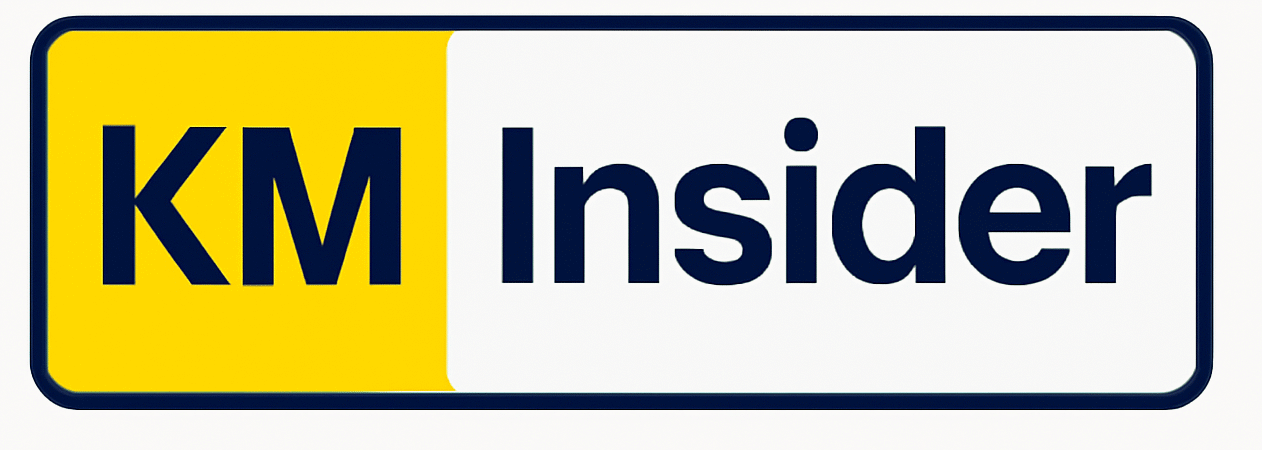I’ve spent the last decade watching knowledge management initiatives launch with fanfare, only to quietly fade into digital obscurity. The pattern is depressingly familiar: executives approve substantial budgets for KM platforms, IT implements sophisticated systems, and employees… well, employees continue working exactly as they did before.
The fundamental problem isn’t technology resistance or poor user adoption. It’s that most knowledge management ROI efforts begin with the wrong question. Instead of asking “How do we build a knowledge base?” successful organizations ask “What business problems are we solving, and how will we measure success?”

Why Traditional KM ROI Approaches Fail
Last year, I audited twelve enterprise knowledge management implementations. Every single one measured success through vanity metrics: page views, document uploads, user registrations. Meanwhile, the business problems that justified the initial investment—slow customer response times, repeated project mistakes, lengthy employee onboarding—remained largely unchanged.
The disconnect happens because knowledge management ROI discussions typically start with technology capabilities rather than business outcomes. IT demonstrates impressive search functionality while operations teams still can’t find the troubleshooting guide they need. The system works perfectly; the strategy does not.
The Business-First Approach to Knowledge Management ROI
Start with Pain Points, Not Platforms
Before selecting any technology, identify the specific moments when knowledge gaps create measurable business costs. I recommend conducting “knowledge friction audits” across three critical areas:
Decision-making delays: How often do projects stall while teams search for precedents, policies, or expert guidance? Track the time between question and resolution across different scenarios.
Repetitive problem-solving: Which issues consume disproportionate support resources despite having been solved multiple times previously? Calculate the cost of recreating solutions rather than reusing existing knowledge.
Onboarding inefficiencies: How long does it take new employees to become productive, and what percentage of that time involves seeking information that should be readily available?
Map Knowledge to Revenue Impact
Once you’ve identified friction points, connect them directly to financial outcomes. For example, at a SaaS company I worked with, we discovered that customer success managers spent 40% of their time searching for product documentation and implementation examples.
We calculated the opportunity cost: if CSMs could redirect just half that time to actual customer interaction, renewal rates would improve by an estimated 8%. With $50M in annual recurring revenue, that represented $4M in additional value—far exceeding the knowledge management implementation cost.
This approach transforms knowledge management ROI from a cost center discussion into a revenue enablement conversation.
Building Your ROI-Driven Knowledge Strategy
Phase 1: Quantify Current Knowledge Costs
Most organizations underestimate the hidden costs of poor knowledge management. Beyond the obvious inefficiencies, consider these often-overlooked impacts:
Customer experience degradation: When support agents can’t quickly access accurate information, customers notice. Track how knowledge gaps affect resolution times, escalation rates, and satisfaction scores.
Innovation bottlenecks: Engineers reinventing solutions that exist elsewhere in the organization aren’t just inefficient—they’re missing opportunities to build on existing work and create breakthrough innovations.
Compliance risks: In regulated industries, knowledge management ROI extends beyond efficiency to include the costs of audit failures, regulatory violations, and the associated legal exposure.
Phase 2: Design for Workflow Integration
The most successful knowledge management ROI strategies I’ve seen treat information as a byproduct of work, not an additional task. Instead of asking employees to contribute to knowledge bases, design systems that capture expertise as people do their jobs.
For instance, when customer support resolves complex issues, the solution automatically becomes searchable for future cases. When engineers document architecture decisions, that information flows directly into developer onboarding materials. When sales teams win competitive deals, their strategies become instantly available to colleagues facing similar situations.
This approach dramatically improves both knowledge quality and user adoption because it eliminates the extra work typically required for knowledge sharing.
Phase 3: Implement Progressive Measurement
Knowledge management ROI measurement should evolve as your program matures. I recommend a three-tier approach:
Immediate metrics (Months 1-3): Focus on adoption and engagement. Are people finding and using the information they need? Track search success rates, time-to-answer, and user feedback quality.
Operational metrics (Months 3-12): Measure process improvements in your target areas. Are customer issues being resolved faster? Are new employees becoming productive sooner? Are project teams making fewer repeated mistakes?
Strategic metrics (Year 1+): Connect knowledge improvements to broader business outcomes. How has better knowledge sharing affected customer satisfaction, employee retention, innovation velocity, or market responsiveness?
Avoiding Common ROI Measurement Pitfalls
The Attribution Challenge
One of the biggest obstacles to proving knowledge management ROI is isolating its impact from other business improvements. When customer satisfaction scores improve, how much credit goes to knowledge management versus product enhancements, training programs, or market conditions?
The solution is establishing clear baselines before implementation and using control groups when possible. If you’re rolling out knowledge improvements to customer support, compare performance between teams with access to enhanced information versus those still using legacy systems.
The Perfection Trap
Many organizations delay knowledge management ROI measurement until they’ve built comprehensive, perfectly organized repositories. This approach virtually guarantees failure because it separates knowledge creation from value delivery by months or years.
Instead, focus on delivering immediate value in narrow use cases. Solve one specific knowledge problem completely rather than partially addressing many issues. Success builds momentum for expansion while providing clear ROI evidence for continued investment.
Making the Business Case to Executives
Speak Their Language
When presenting knowledge management ROI to executive audiences, avoid KM terminology entirely. Instead, frame discussions around familiar business metrics:
- Revenue acceleration through faster deal cycles
- Cost reduction via process efficiency improvements
- Risk mitigation through better compliance and knowledge retention
- Competitive advantage through superior organizational learning
Provide Conservative Estimates
I’ve seen promising knowledge management ROI initiatives killed by overly optimistic projections. Build your business case using conservative assumptions that account for adoption curves, change management challenges, and measurement difficulties.
For example, if analysis suggests 30% time savings are possible, project 15% improvements in your ROI calculations. This approach builds credibility while creating opportunities to exceed expectations and secure additional investment.
The Long-Term Knowledge Management ROI Vision
Successful knowledge management ROI extends beyond immediate efficiency gains to create lasting competitive advantages. Organizations that excel at capturing, sharing, and applying knowledge make better decisions faster, innovate more effectively, and adapt more quickly to market changes.
The companies thriving in today’s volatile environment aren’t necessarily those with the best individual experts—they’re the organizations that have mastered collective intelligence. They’ve built systems and cultures that help every employee access the expertise of their entire organization.
This transformation doesn’t happen overnight, but it begins with treating knowledge as a strategic asset that deserves the same rigorous measurement and management attention as any other critical business resource.
The path forward requires patience, measurement discipline, and unwavering focus on business outcomes. But for organizations that commit to building genuine knowledge management ROI capabilities, the rewards extend far beyond cost savings to include sustainable competitive advantages that compound over time.
Read: Measuring KM Impact: Strategies for Proving Value in 2025
